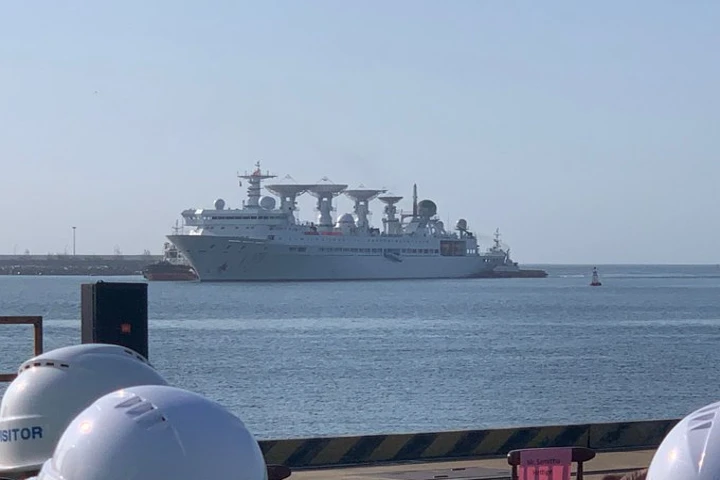A recent US research report says that China will develop the Hambantota port in Sri Lanka as its next naval base where Beijing has spent $2.19 billion developing the port. As of now China operates one overseas naval base in the East African nation of Djibouti.
The study by the AidData research project at the William & Mary University in Virginia says that under China’s ambitious plans to extend its military reach, it will soon seek to build its ports in Equatorial Guinea, Pakistan and Cameroon over the next five years.
The report adds that of all the overseas ports under development, “China’s single largest port investment anywhere is at Hambantota, and Beijing exercises direct control over the facility… Coupled with its strategic location, the popularity of China among elites and the population, and Sri Lanka’s alignment with China in UNGA voting, Hambantota is our top candidate for a future base”, says AidData.
However, Indian military veterans hold differing views about this assessment.
India Narrative spoke with Vice Admiral Shekhar Sinha, former commander-in-chief, Western Naval Command, about Chinese ambitions over the Sri Lankan port. He says that it is “very unlikely that Hambantota will be a PLA Navy (PLAN) port. There are agreements between Sri Lanka and India in place to that effect”.
This is an assurance that Colombo has often given to New Delhi to allay its fears over Chinese military stepping into the strategic Indian Ocean Region (IOR). With only India coming to the rescue of Sri Lanka in its most troublesome economic crisis, the popular and political mood in Colombo has changed considerably towards India.
While India is confident about Colombo, it is not the same story with Pakistan – a country heavily under Chinese debt and considered an all-weather ally of the communist nation.
Admiral Sinha says that Gwadar is an operational commercial port where “Pakistan is leasing out assets to bail itself out of its economic crisis. In all probability it could become a PLAN port. It will be the intention of China to track and shadow US Navy ships and submarines transiting in and out of the Gulf apart from Indian Navy ships”.
He adds that “the Indian government is doing what it can and what it should. The ports in the vicinity are a decision between two sovereign countries and India can hardly alter those”. At the same time, he points to the fact that “India’s relations with IOR littorals, except Pakistan are cordial and that must be factored. As far as the Indian Naval combat power is concerned, it is the most powerful resident Navy and has tremendous geographical advantage. Otherwise, a continuous watch is kept in the neighbourhood and IOR littorals”.
However, Col. Vinayak Bhat (retd) says that China firmly has Sri Lanka in its grip. “It has taken the Hambantota Port on lease for 99 years and the port is fully functional. This port can be used for naval purposes and if Beijing sends its military vessels, Sri Lanka may not have the power to say no”. He adds that if in an emergency, China sends in a military vessel, Colombo may not be able to stop it.
#China‘s #DragonsGrip tightens around #SriLanka squuezing out #Hambantota & #Colombo Port City for 99 year lease.
Satellite imagery suggests #PLAN ships (Survey,ARS&AOR) visiting #Hambantota to carry out feasibility studies for a future base.
Read more:https://t.co/iaoRbdbkbU pic.twitter.com/cig6YR923e— 卫纳夜格.巴特 Col Vinayak Bhat (Retd) @Raj47 (@rajfortyseven) October 1, 2018
Bhat adds that China has not only invested considerably in the port, but has also built an airport in Hambantota along with other infrastructural facilities. A car manufacturing plant is being set up which will use the Hambantota port to export the cars, which will necessitate the use of really large ships.
While India-Sri Lanka relations witness a rebound and deepening contacts at the top levels, China’s soaring ambitions have ensured escalated an arms race across Asia. In the Asia-Pacific also, South Korea, Japan and Taiwan have been strengthening their navies and building formidable weapons.




















